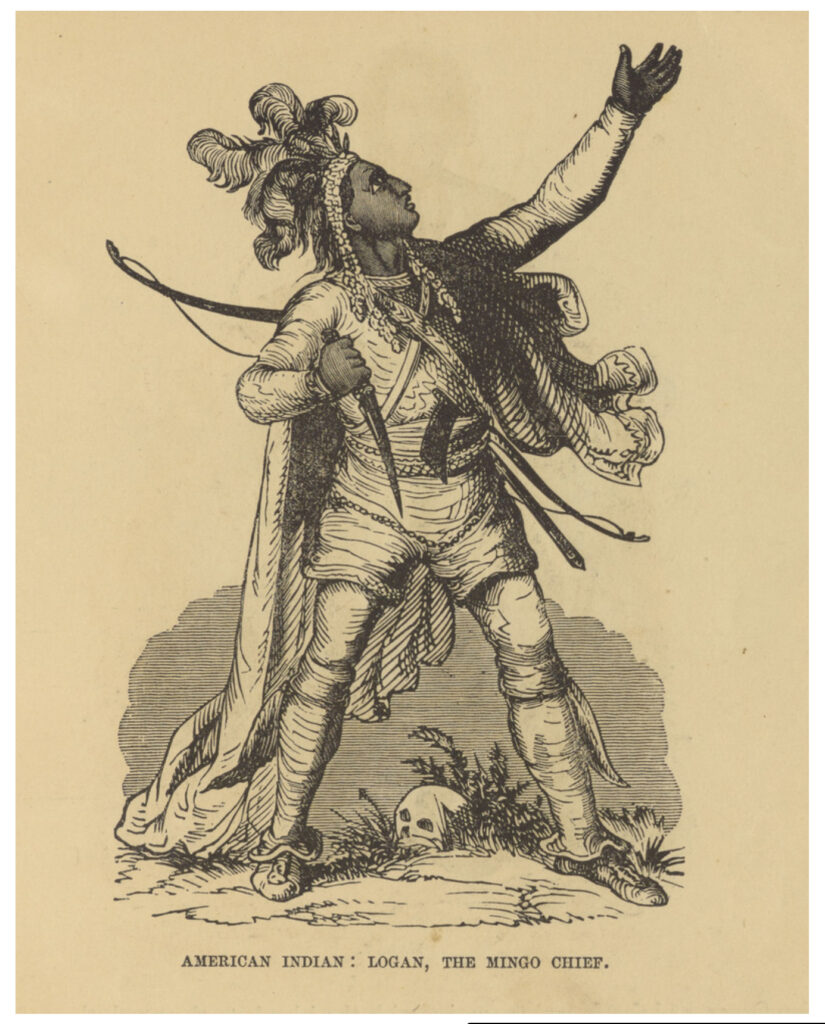The modern region where the mob violence in question occurred is downstream traveling west to south of the ‘Forks of the Ohio River’, the confluence where the Allegheny River and the Monongahela River intersect to form the Ohio River, stretching from modern day Pittsburgh, Pennsylvania, down to the border of Ohio and West Virginia’s Northern Panhandle, primarily around Wheeling, WV and its surrounding areas.
In the eighteenth century the territory was a plentiful wilderness, suffused with buffalo, deer, turkey, and other game. Moreover, the region, in a rare instance within the imperialist history of land expropriation in the Americas, was not consistently populated year-round. Few longstanding Native settlements existed in the Ohio River Valley area before the Shawnee and Lenape[1] were driven west following defeat against the Six Nations in what modern historians have labeled the Beaver Wars.
French Pierre Joseph Céloron de Blainville, Commander of the French forces that constituted of Troupes de la Marine, local militia, and select Native allies of the French, were tasked initially with exploring the Ohio River Valley in 1749. The expedition only identified one settlement, known as Logstown, on the Ohio.
However, the valley was the hunting grounds of Shawnee, Lenape, Seneca, Cayuga, Wyandots, and many other tribes. Modern place names such as Old Mingo Bottom, the site of modern Follansbee, near Harmon Creek on the West Virginia side of the Ohio survives as an enduring testament that the European settlers were aware that their newly claimed land had only recently been forcibly abandoned by westwardly moving Native tribes. Research that proceeded the dedication of the Mingo monument at West Virginia’s Mingo Flats suggests about sixty Mingo families had once lived at Old Mingo Bottom.[2]
The nomenclature Delaware comes from a river named after the 3rd Baron De La Warr. The more accurate name Lenape will be used for the tribe here on out in this blog series. “Mingo” was a colonial catch-all used to describe Iroquoian-speaking migrants, mostly Seneca or Cayuga including those in Logan’s family, who had settled in the Ohio Valley. The moniker Mingo was intended to degrade those the white colonizers considered a base and contemptible ‘tribe.’[3]

The names “Mingo” and “Delaware” were not what these people called themselves. The term “Mingo” would have faded from use by now had the group not long since been reabsorbed into the Six Nations Confederacy.
Edward Said’s theory of “imaginative geography” from Orientalism also applies here. Said wrote about the Middle East, but his core idea is that imperial powers created simplified, essentialized identities for the people they dominated. Similarly, by labeling diverse and sovereign peoples as “Delaware” or “Mingo,” colonists collapsed complex tribal affiliations into generic or distorted labels—constructing a version of Native identity that served settler interests. Other tribes known by exonym’s include the Crow (Apsáalooke), Nez Perce (Nimíipuu), Iroquois (Haudenosaunee), and Chiricahua (Ned). More tribes are called by colonizer assigned exonyms in the English language than those who are not.
What’s in a name? At the time of this writing, several U.S. military bases formerly named after Confederate generals are being reinstated—albeit now officially dedicated to non-Confederate figures who happen to share the same surnames. Similarly, the federal government has reverted to referring to Denali as Mount McKinley in official communications. These controversies aren’t just about semantics—they reveal that names are political tools, carrying weight far beyond simple reference. Regardless of which side you favor in any naming debate, to admitting preferring one name over another is to acknowledge personal investment. Naming is never neutral. It asserts authority, shapes memory, and rewrites the past. Renaming, like naming itself, is a form of battle.
When colonists labeled diverse Indigenous peoples as “Mingo” or “Delaware,” they weren’t making simple clerical errors—they were asserting control over how these peoples would be remembered, represented, and governed. As mentioned earlier, the name Mingo survives while Lenape has gradually replaced Delaware—not because one term is more accurate than the other, but because the Lenape people still exist to demand correction, while the Mingo do not. Historians are left referencing a group by a name never their own—one originally intended as a slur. To misname is to misrepresent, and to misrepresent is to obscure sovereignty. It is easier to seize land when its stewards have already been reduced to vague categories or insults.
Notes and Citations
[1] In modern usages Mingo Bottom more often refers to a location on the Ohio side of the Ohio river. I differentiate the West Virginia / formerly Virginia side by referring to it as Old Mingo Bottom.
[2] Price, Andrew, and William Henry Cobb. 1921. Monument to, and History of the Mingo Indians; Facts and Traditions about This Tribe, Their Wars, Chiefs, Camps, Villages and Trails. Monument Dedicated to Their Memory near the Village of Mingo, in Tygarts River Valley of West Virginia. F.B. Jenvy. 23.
[3] William Henry Cobb. 1921. Monument to, and History of the Mingo Indians; Facts and Traditions about This Tribe, Their Wars, Chiefs, Camps, Villages and Trails. Monument Dedicated to Their Memory near the Village of Mingo, in Tygarts River Valley of West Virginia. F.B. Jenvy. 5.
[4] Smith, James. Captives Among the Indians: First-hand Narratives of Indian Wars, Customs, Tortures, and Habits of Life During Colonial Times. Edited by Horace Kephart. New York: Outing Publishing Company, 1915. https://archive.org/details/captivesamongind00keph/page/22/mode/2up.
[5] Pyle, Howard. “Braddock’s defeat, Battle of Monongahela.” Painting. [ca. 1890–1896]. Digital Commonwealth, https://ark.digitalcommonwealth.org/ark:/50959/c247gh00d (accessed June 15, 2025).
Leave a Reply